We repeat what we don't repair
Debriefing has become a key element of building a culture of learning/unlearning across organisations.
Debriefing is used extensively in sport – as reflected in the note below by Cameron Schwab.
“We use the last game to draw as much learning as possible from an individual and team perspective before the next game. As games are played, the knowledge accumulates, soon embedded as wisdom. There are always three contexts:
1. What Happened? – What did we learn and how do we share these learnings with our teammates?
2. What Now? – What are we going to do about it, and what aren’t we going to do? We cannot do everything and ‘strategically quitting’ is often as important as what we are still focused on.
3. What Next? – What have we consciously put off to the future and where are we heading?
Building a culture of learning/unlearning might just be the most important leadership objective there is.”
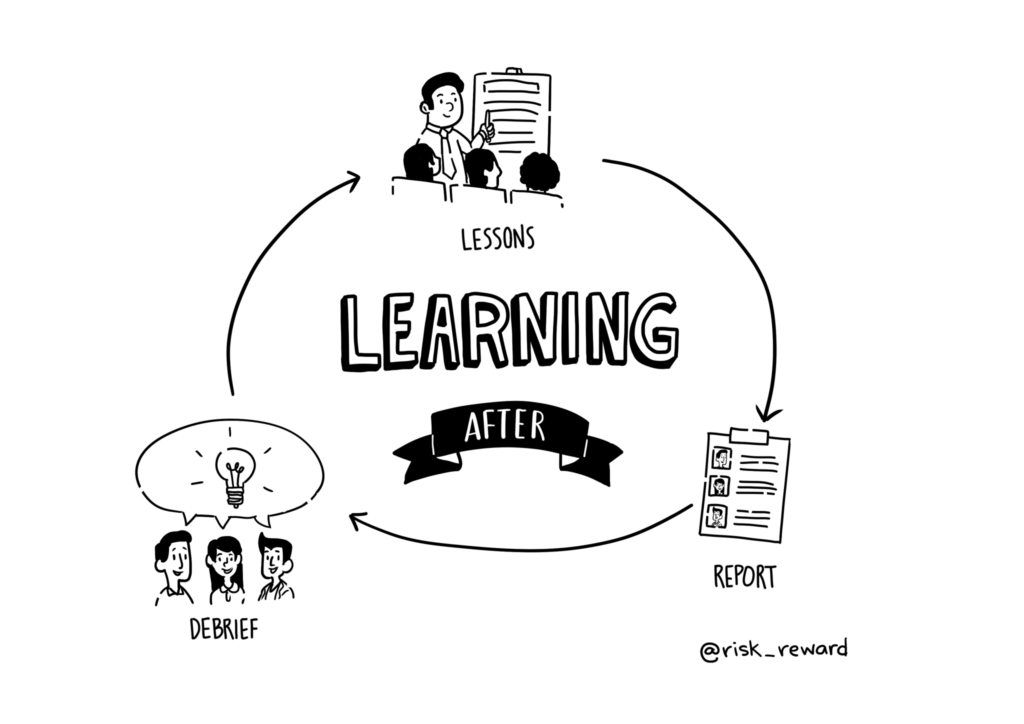
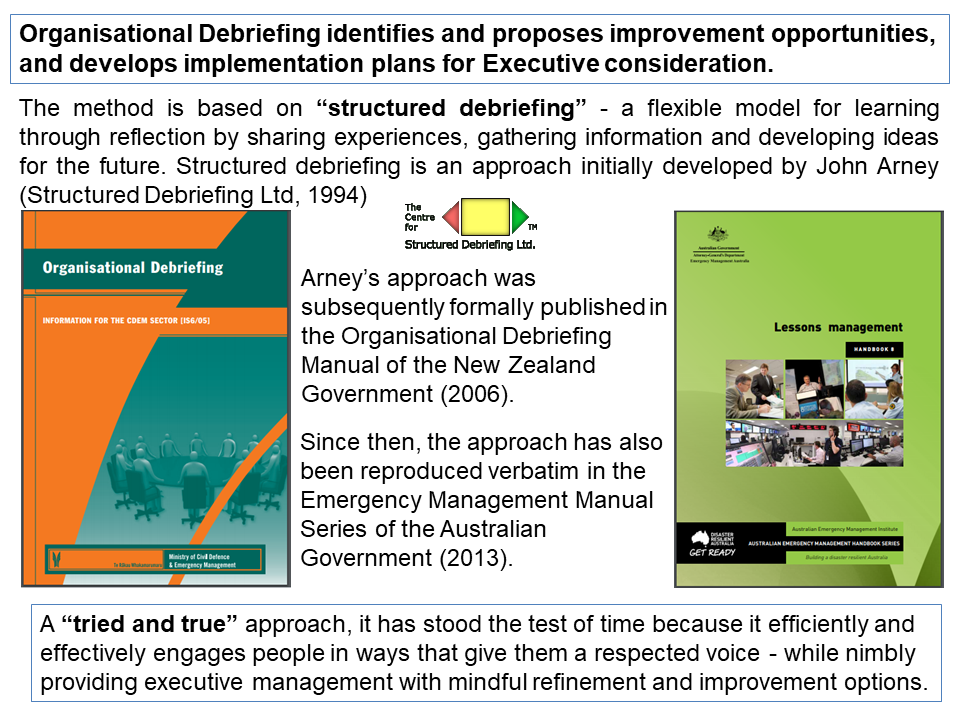
Why did this happen?
More than a conversation to discuss what did and did not go well, debriefing digs into why things happened and explores implications for the future.
Accurate understanding and knowledge are placed ahead of egos.
People participate with a desire to understand root causes of their successes and failures, so they know what to repeat and what to change.
The conversations may be uncomfortable, but participants realise that the discomfort of getting things out on the table is minimal compared to the pain of making the same mistakes again.
Thinking should start by considering four key questions before we start.
1. What were we trying to accomplish? Think about context – the objectives you were trying to hit.
2. Where did we hit (or miss) our objectives? Review our results – is the group is aligned?
3. What caused our results?
4. What should we start, stop, or continue doing?
Prompts vs Leading the witness
There are potentially many different areas and aspects to debrief, looking at the preparation and then the linear response, as well as looking at general points. How you decide within your own organisation to debrief will be very dependent on time available and the senior management’s appetite to have a detailed debriefing or a more general review. Even if there is not the appetite for detail, you should at least be looking at your part of the organisation’s response!
It is important to establish a “prompts framework” which will encourage and allow participants to hang their reflections on – and be used in the future to develop capability. Some methodologies suggest consideration of the following subjects for prompt questions: – Notification/activation – Deployment/mobilisation – Operational issues – Relationship management (Ref – from NZ Guide).
There are many different aspects you may want to review and look at during the debrief:
1. What level of planning did the organisation have in place before the onset of impact?
2. Why was the specific level of planning in place?
3. Who was responsible for the plan and identifying potential risks?
4. Did our organisation’s plans fit the incident, how far off were they, what assumptions were made and why/what was the difference compared to what happened?
5. How did the organisation respond and when? In hindsight, could we have done more and earlier? What was the reason for any differences?
6. Review communication with stakeholders and whether the communication had the desired effect.
7. Did our incident management process, team(s) and procedures work as we thought they would?
8. What have we learned from our overall response and how could that response be improved?
You might use all the above things to think about before the debriefing.
It is important to not let a framework stifle or direct your considerations too narrowly. Such devices need to support discovery – not stifle it.

The importance of using a “Double-Diamond” approach
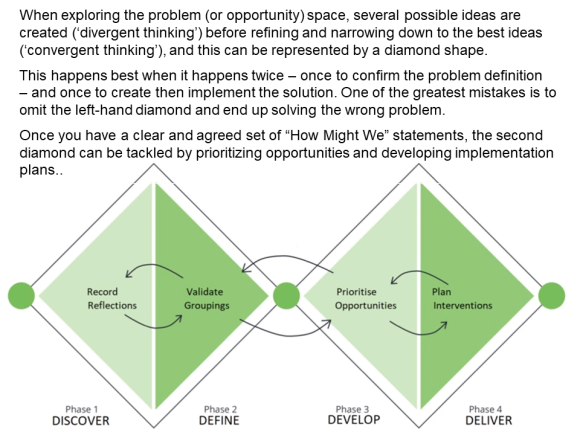
Phase 1 - Discover



Keep the data collection tools simple – and focused
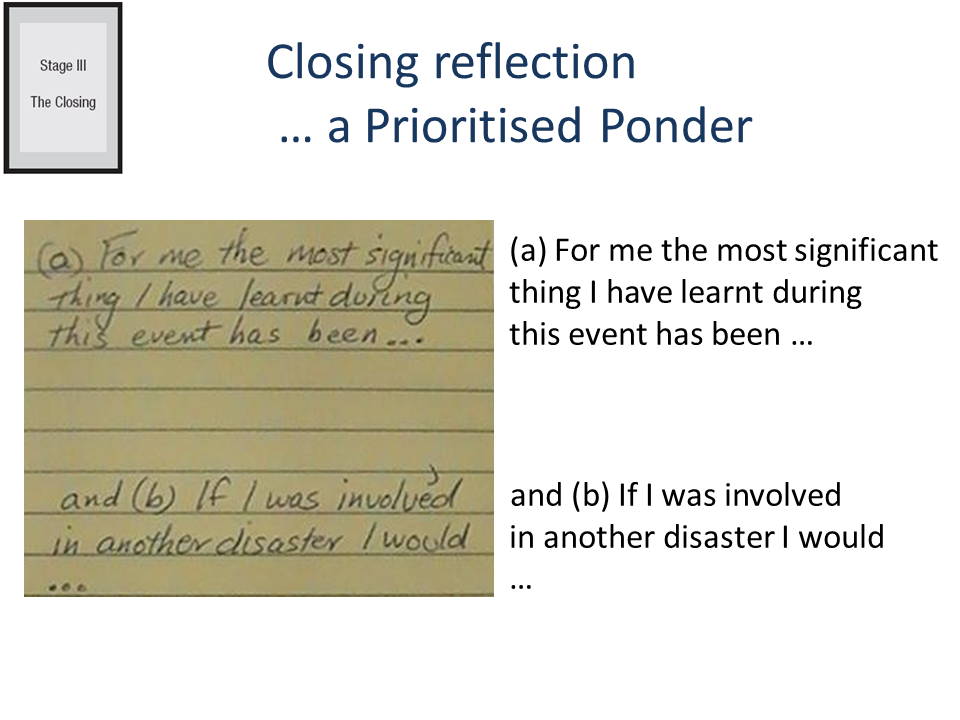
We will take you and your organisation through three key steps:
1. We provide documents, guidelines, and advice to support the recording and collection of “individual reflections”. For the set price engagement, this can be for up to twenty-five (25) participants of your choice.

2. We will then group the reflections received (usually within a seven-day time limit), into “like with like – issues of significance” (example below).
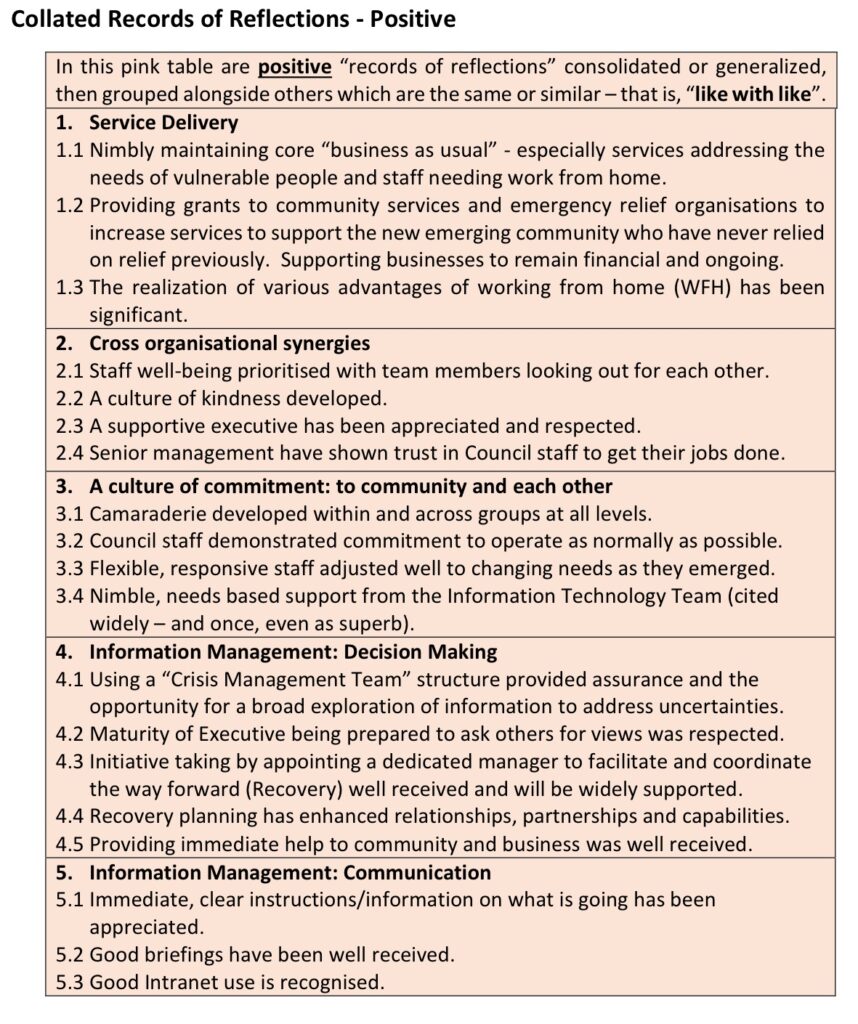
3. Our analysis and review of the collated reflections will then be presented as a report to you, recommending how to move from the DISCOVER phase to the DEFINE phase.
Phase 1 - Discover
The last piece of the “DEFINE” step is done “in house”, and at your own pace, by you.
Why? Because it often involves issues of confidentiality which are also often sensitive.

Using a framework as a heuristic device, we will attribute the reflections to the most appropriate part of the framework being used. This will strategically highlight where potential improvements ought to be considered.
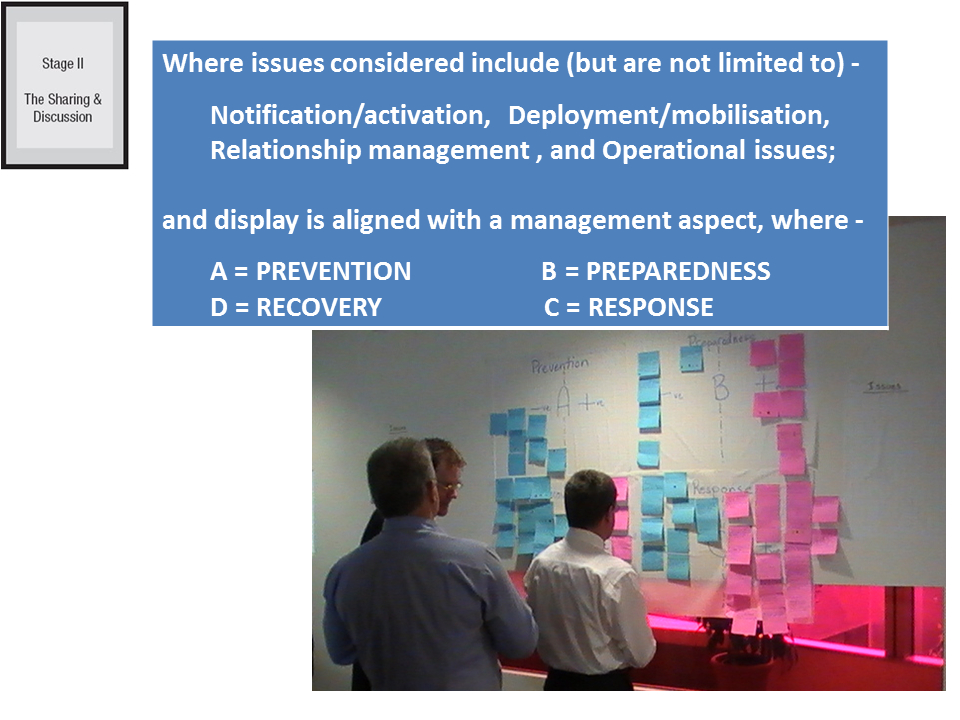
It is importantthe frameworks used as prompts and the collation of ideas are easy to understand
It is suggested you do this finalizing implementation work collaboratively – using a “nominal group” technique of up to two feedback cycles and edits – where stakeholders validate and prioritize the opportunities of significance (initially provided as grouped issues in the report). This step can be a straightforward and transparent process using a modified nominal group technique (such as “dots” / or affinity diagrams).
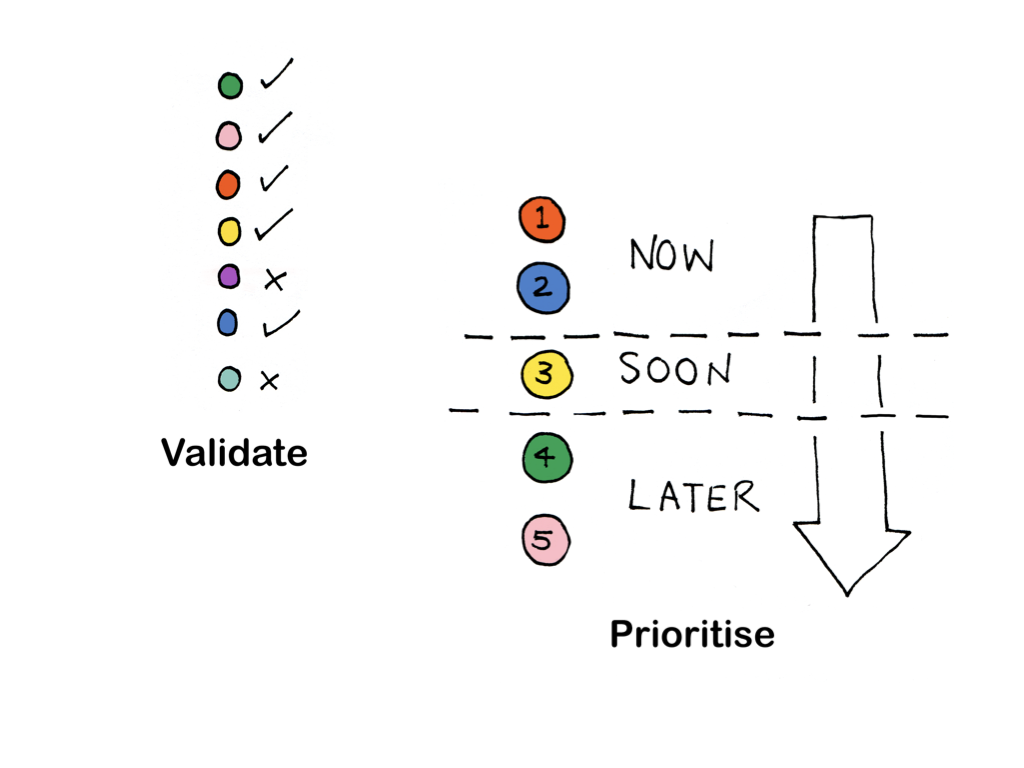
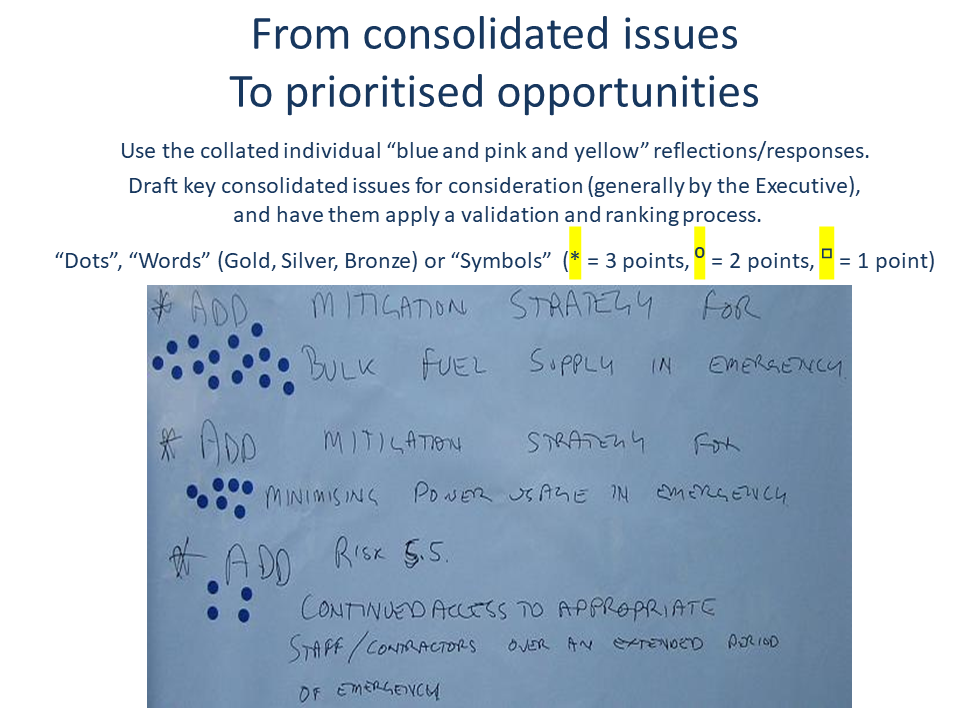
Ultimately, which directions you take and how far you go in those directions will reflect your values.
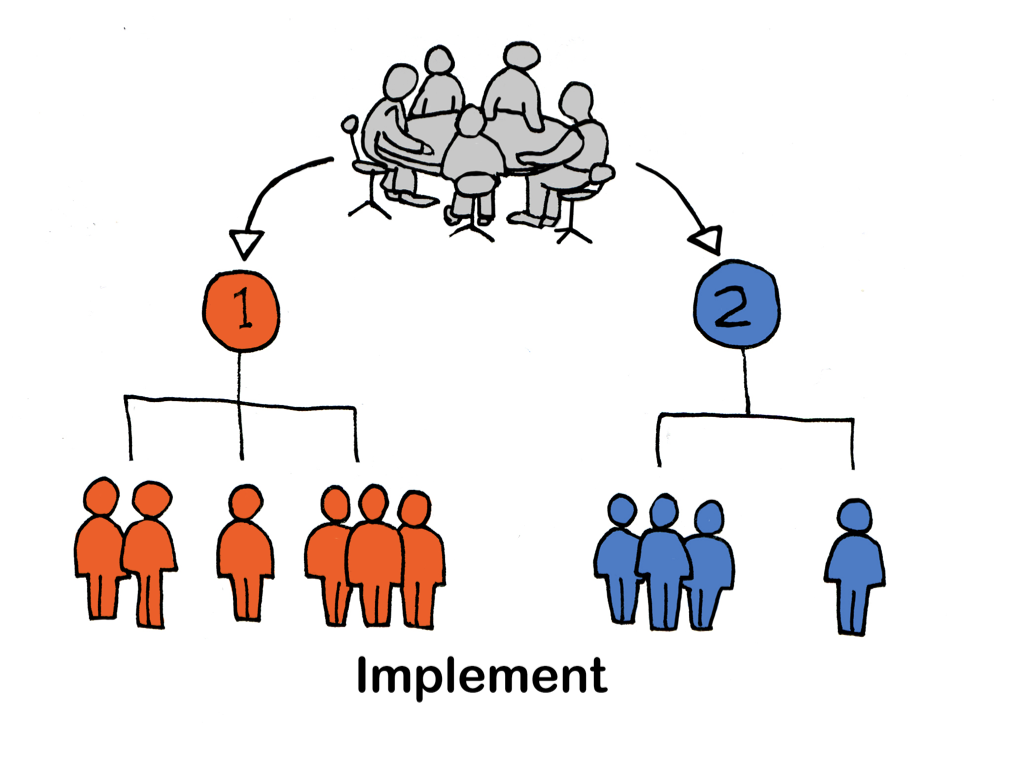
For managers
Managers – especially those responsible for “critical activities” (from a business continuity perspective) – can then build on this validation and ranking work to develop draft action plans to implement the improvement opportunities (again, using simple plans which focus on ‘what needs to be done, why, by whom, how and by when’). The approved plans can then be considered for possible transfer to the organization’s strategic or corporate plan.
